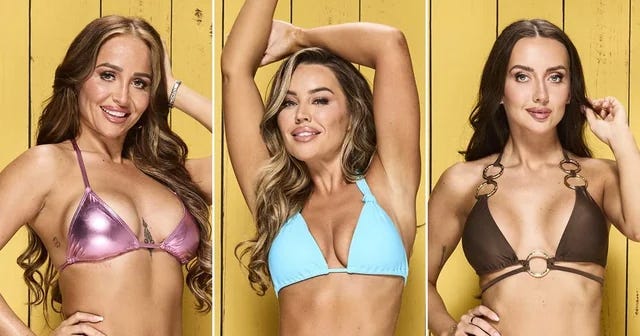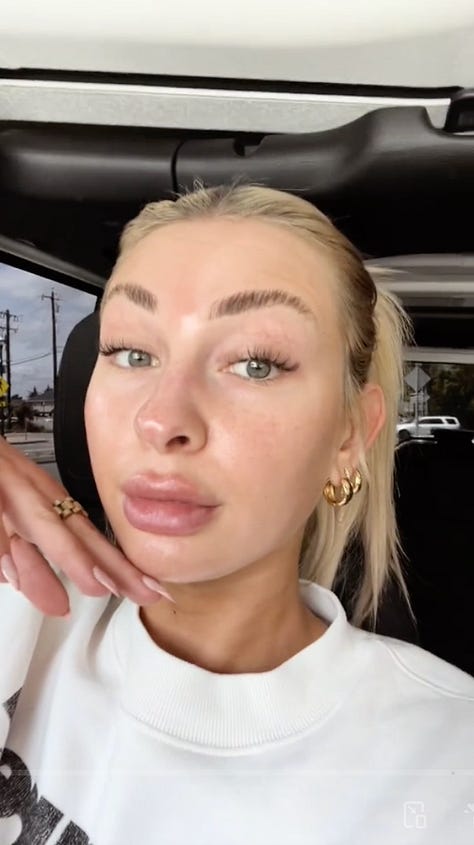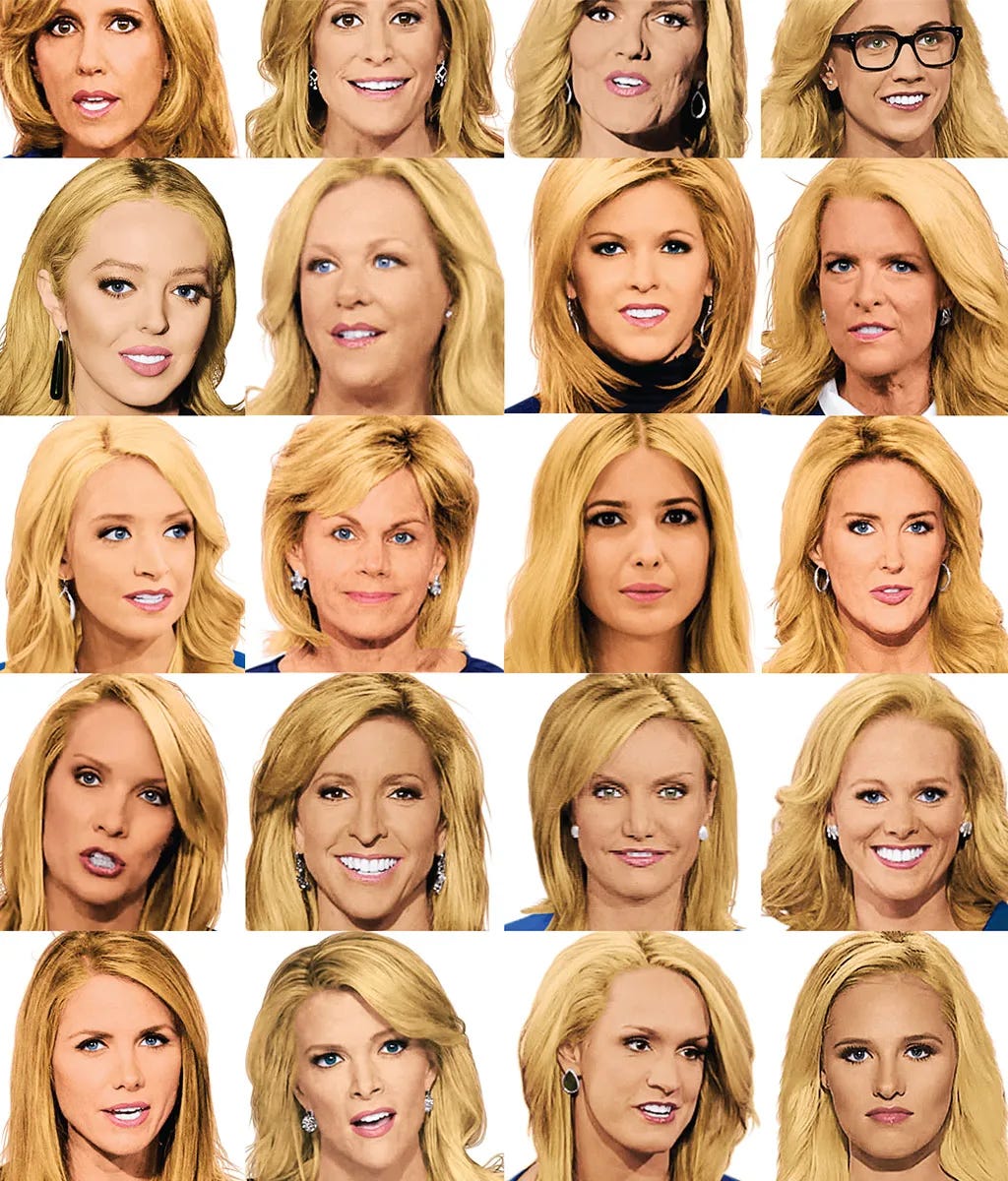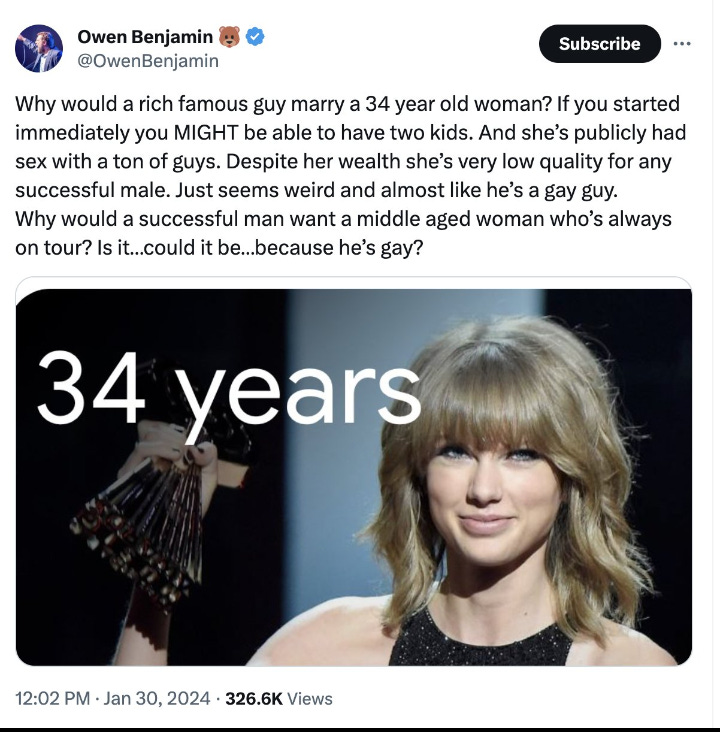
Since I was 15, I have devoted hundreds of hours, thousands of dollars, and infinite mental bandwidth to sculpting a convincing Hot Girl Disguise. I have adhered acrylic to my eyelashes and nails, soaked my skin in all manner of tanning creams and foams, and bleached my hair to the point of plausible brain damage.
For 15 years, I’ve been beauty consumerism’s perfect mark—and yet, as I approach 30, I find it hard to carry on. My sensibilities are too thoroughly offended by what’s on offer: I refuse to participate in the ruse of “anti-aging.” You can sell my dumb ass just about anything, but the suggestion that I spend the rest of my precious life striving tirelessly to revert to my 19-year-old self is a bridge too far.
My counter is simple: Let women age.
The most unavoidable manifestation of the anti-aging world is Botox, a neurotoxin made from the same bacteria that causes food poisoning which paralyzes muscles and blocks certain nerves. It has become almost unbelievably prevalent and celebrated.
Maybe that’s why pieces like this one always feel like they should feature a chyron bearing a blanket disclaimer to avoid insulting anyone who chooses to cope with the pressures of our current context by partaking. “Of course,” I find myself wanting to write over and over again, “I don’t judge anyone who gets Botox! Do what makes you feel good!”
But this is almost beside the point. The point is that there’s an aesthetic choice that “makes you feel good” at all, and that this choice just so happens to be the one that affirms youth as the most valuable quality a woman can possess. Just like the skinny eyebrows of the 1990s or the glazed donut skin of the 2020s, these preferences are learned. The preference for female youth is the most enduring, and, by my estimation, most sinister (though, those eyebrows…).
Anyone familiar with the important work of beauty culture critic Jessica DeFino knows that beauty norms are paradoxical in the sense that they come from “culture,” and yet, “culture” is nothing more than the aggregate of individual choices.
That is to say: Every time a person chooses to get lip filler, it creates a tiny, Kylie Lip Kit-sized ripple effect. Anyone who interacts with this person may now find themselves thinking their own lips look rather thin by comparison. Despite the KarJenner of it all, trends are not dictated from on high, but something we transmit to one another like a virus. The more people who labor to uphold a norm, the more “normal” it becomes. I interviewed Jessica for my show two years ago, and she nailed the stakes:
“When a beauty standard is normalized, it’s incorporated into what you could call ‘pretty privilege,’ or what society expects of women in order to treat them with basic human dignity.”
And sure, it feels a little silly to pat myself on the back for not caving at the ripe old age of 29—cute, but check back in at 39 and let us know how you feel about your crows’ feet then, you bitter hag! But it’s become so popular among really young women that it’s easy to forget what normal, 30-year-old faces look like. One in 4 Botox users are under the age of 34 (and the vast majority are white, but that’s a statistic for dissection in a different think piece). Getting Botox—and talking about getting Botox—has become incredibly common.
If you question aloud whether this is a net-positive, you’ll likely hear that it’s anti-feminist to question any choice a woman makes about her body (even one that is, as I’m arguing, coerced). This defense says a choice—any choice—is definitionally empowering, by the very fact of a woman choosing it. In this framing, cosmetic procedures metamorphose into progressive acts.
And sure, I suppose it’s good we’re forthcoming about how we’re achieving foreheads that don’t move—but the “transparent” come-get-Botox-with-me trend reads to me like an influencer’s promise to always be honest about the ways in which they’re lying to us.





“Preventative Botox” is perhaps the most successful scam perpetrated on unsuspecting 23-year-olds, promising that if you work to preserve your youth while you’re still young, you’ll never have to age. Cruelly and maybe somewhat predictably (as a “frozen face” has historically been a hallmark of wealthy, white, middle-aged women), the result is a bunch of 25-year-olds who look 40. The resultant snark is a perverse “gotcha”: Ha ha! Look at these MORONS! Look how OLD they look!, as though “looking old” is a fate worse than death. After all, when we say a woman over 35 looks beautiful, we usually just mean she looks young.
Both women and men are judged for how they look, but “anti-aging” is an issue specific to women. Arguing that a preference for youthfulness is universal—or, at the very least, not gender-specific—willfully ignores the existence of the “silver fox” trope, and the way in which there’s no female analog. Attractive men become more distinguished, handsome, and desirable through middle age, because on a male body, age telegraphs experience and, often, power. Attractive women in middle age are merely “past their prime.” More than 90% of Botox users are women.
The obsession with female youth is not just infantilizing. My least charitable and perhaps most chaotic interpretation is that it’s also vaguely pedophilic. It’s hard to separate some baser predation from the preference for women who appear to have very little life experience.
I don’t think I’m making any new arguments. But lately, it’s felt less important to get comfortable with “looking my age” and more crucial to think less about what I look like at all—particularly as the Dysport-wielding TikTokers insist now is the time I should begin caring more. I cringe when I remember all the energy I committed to my appearance as soon as I became aware of its power to affect the way other people treated me—I started highlighting my hair as a sophomore in high school, clocking almost immediately that nearly all of the popular girls with legions of adoring male fans were blonde (they, too, were getting highlights at 15).
Much digital peroxide has been spilled about the loaded cultural meaning behind our society’s implicit preference for blond hair, a trait that fewer than 2% of the world’s population naturally possesses. Yes, there are the obvious racial undertones—but we also can’t overlook the role of age. Many more children than adults are blonde, their hair darkening after puberty. What is an obsession with blondness if not a preference for youth?
Sometimes I think about the person I might be had I spent more of my youth focused not on being as hot as possible, but on learning about what interested me. (Circular logic alert: I was interested in being hot.) The constant, thrumming undercurrent of perceiving how my appearance was being perceived hijacked an unspeakable amount of my mental bandwidth.
Now that I’ve achieved some semblance of financial independence, agency, and influence in the world, the last thing I want to do is spend it cosplaying a version of myself that didn’t have those things.
Here’s the sad part: I’m not so sure an aesthetically fancy-free adolescence would’ve gotten me “further ahead”; at least, not in the world we currently inhabit. There’s a case to be made that investing in my appearance as a young woman was actually a rational choice that paid dividends. Studies show that “attractive” women get higher grades and earn more money.
When you can cobble together enough hours in the salon or med spa chair to portray a compelling-enough facsimile of Conventional 10-Years-Younger Hot to benefit from pretty privilege, it can feel like self-sabotage not to. Falling in line and accepting the directive to “anti-age” as your feminine moral imperative is a similarly pragmatic choice in a world that is pathologically unapologetic about its preference for young women.
But as Jessica pointed out to me, it’s no coincidence that it’s precisely when women are beginning to gain real power and influence in the world (often, their thirties) that they are faced with a barrage of “anti-aging” messaging, urging them to preoccupy themselves with performing youth at the very moment they’ve evolved past it.
In that sense, “individual choice” is both beside the point and the most radical manifestation of my agency that I possess. I’m learning that sometimes it means choosing to disadvantage yourself on principle.
When you decide to stop wearing makeup, or coloring your hair, or attempting to prevent yourself from exhibiting signs of getting older and wiser, you accept that it might mean you get fewer opportunities, less attention, or find yourself the recipient of less frequent favors.
I think of this sacrifice not as for our benefit, but for the women who come after us. Maybe our choice to subvert—rather than obey—the glorification of female youth will reverberate, moving culture ever so slightly closer to one we’d like to live in ourselves, even if we never do. A world in which the physical evidence of a lifetime of self-expression doesn’t need to be muted or concealed.
“Every woman deserves to feel beautiful” is a sentiment you can’t really refute, if you believe beauty is a quality that’s important for women to possess. (When I say “beauty,” I mean in the Haley Bieber-dictated way—the kind only achievable by devoting the requisite amount of time, energy, and money.) “Every woman deserves to ceaselessly toil under the impossible mandate that she defy time, and then benefit from the societal spoils of doing so if she succeeds” sounds a lot less warm and fuzzy.
I think there’s a temptation to write off discussions like these as “not that deep” or “shut the f*** up, you wrinkly bitch, I just like looking younger, let me live,” and, sure—see also: blanket disclaimer!
But can we really, in good faith, argue that it’s not that deep anymore? New York Magazine recently published a piece about how the women in the Republican Party are conspicuously contorting themselves in the image of Trump-era femininity—a conservatism in which the man at the helm used to own beauty pageants—to align themselves with this narrow vision of highlighted, tanned, long-legged, and yes, youthful womanhood, or else risk being discarded as unworthy of keeping around. In 2002, Trump himself noted that he prefers women under the age of 35, lest they possess “too much life experience.” Don’t get these men started on how old and undesirable that crone 34-year-old Taylor Swift is.
Whether we like it or not, certain aesthetic choices communicate an approval of (and do the work to uphold) this rigid and oppressive status quo.
Other choices might just be a vote for dismantling it.







Really, really love this piece as a 34-year-old Botox refuser. I've also thought a lot about how Botox makes women more "palatable" by effectively muting our anger & emotions visually....
This was incredible. One of my favorite pieces you’ve written so far. As a 40 year old with no preventative Botox or anti aging skin regimen in place, the battle to not give in to the pressure is real! Especially when gravity and normal age is starting to set in(read NORMAL). To let this completely go and be set free of it really is a goal. As you pointed out, think of what we can and will do without the energy and money spent on trying to be something we aren’t and weren’t even made to be.